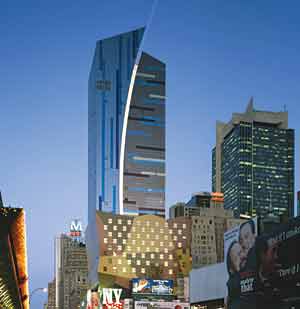Exploring the High-Performance Benefits of Laminated Glass
Sustainability
The sustainability movement has become one of the world's leading architectural trends. In the U.S., buildings account for 39 percent of total energy use and 68 percent of total electricity use. Sustainable design supports efforts to conserve and restore natural resources and reduce waste. The resulting benefits include enhanced occupant comfort and health, energy efficiency, and improved quality of life.
|
Laminated glass usage contributes to sustainability goals by maximizing natural light in a building while minimizing heat gain. The laminate interlayer provides a number of options when specifying laminated glass for daylighting. Various laminates, including colored or textured interlayers, can let in appropriate amounts of light and diffuse the light throughout interior spaces. Tinted glass substrates, coatings, and silkscreen patterns may also be used. Ultimately, daylighting may reduce cooling costs, as natural light produces less heat than artificial light. Various studies, including one by the Rocky Mountain Institute, have noted that this may also improve occupant productivity and health, and create a more pleasant environment.
Daylighting with laminated glass can also reduce energy costs associated with lighting and cooling a building. A standard light bulb produces 85 percent heat and 15 percent light. In the U.S., 40 to 50 percent of total energy consumed by buildings is for electric light and to remove the heat it produces. Reducing the amount of artificial light reduces both electricity costs and cooling costs associated with removing the heat from the electric lights.
|
||||











